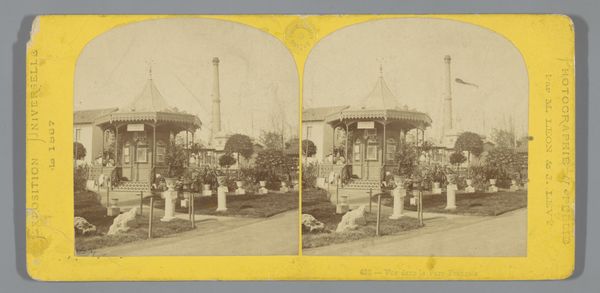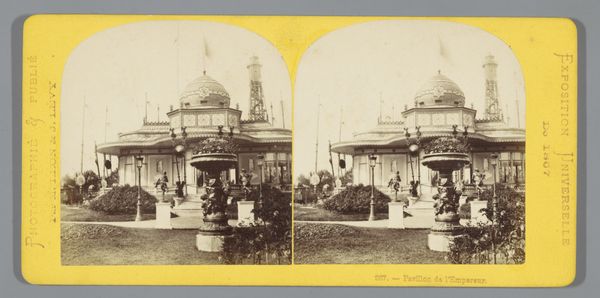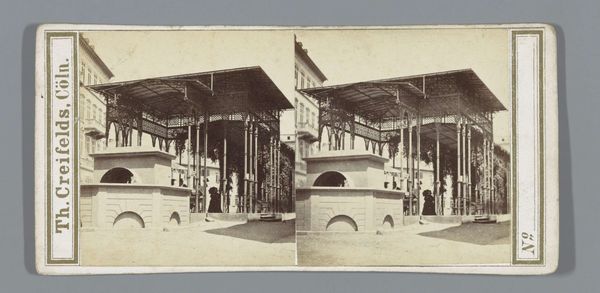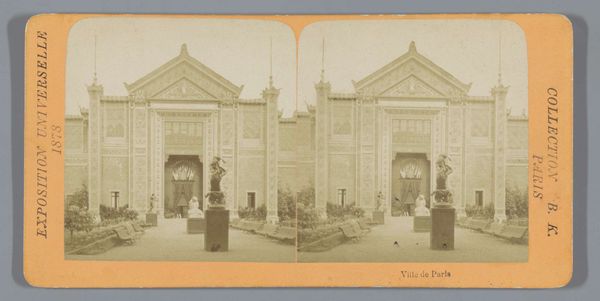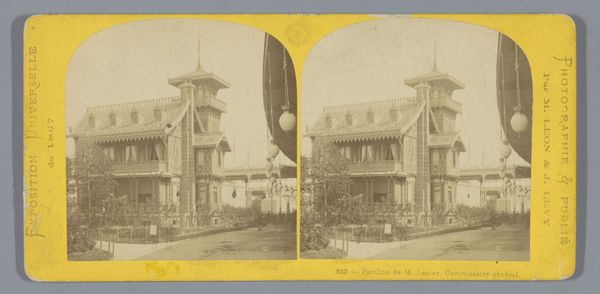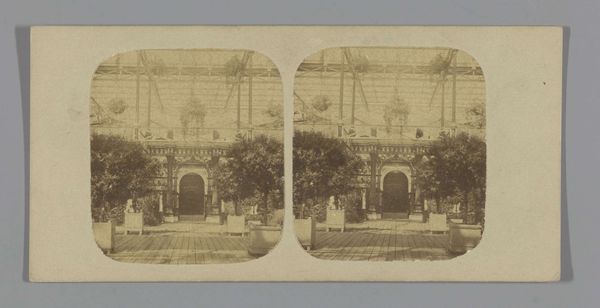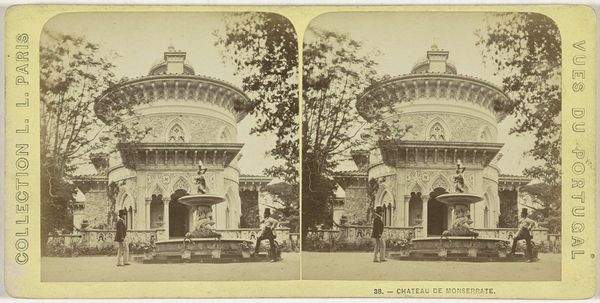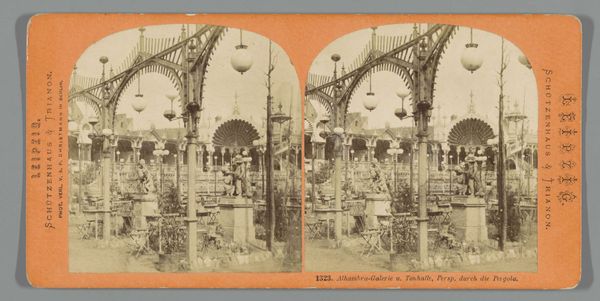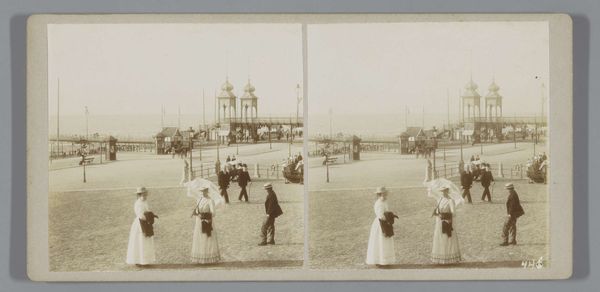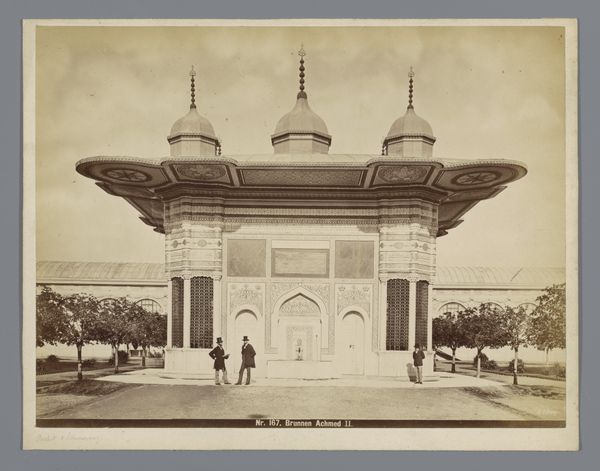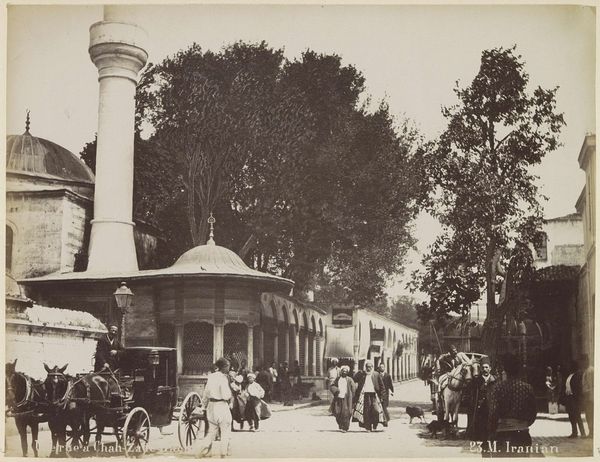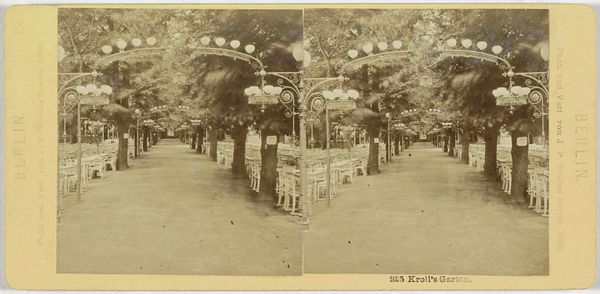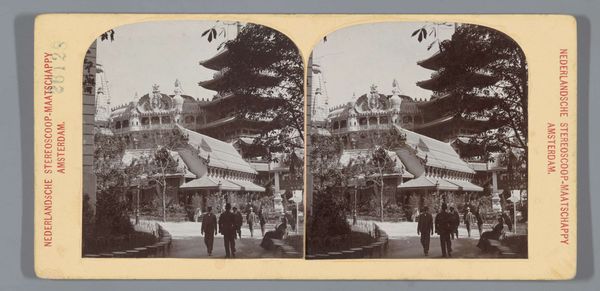
Pavilion and United States Springs, Saratoga, N.Y. 1875 - 1899
0:00
0:00
photography
#
16_19th-century
#
landscape
#
photography
#
realism
Dimensions: 7.6 × 7.5 cm (each image); 8.6 × 17.6 cm (card)
Copyright: Public Domain
Curator: This is a fascinating stereograph, "Pavilion and United States Springs, Saratoga, N.Y.," made between 1875 and 1899 by Baker & Record, Photographers. The twin images, presented side-by-side, give the viewer a three-dimensional effect, which was quite popular at the time. Editor: The clarity is striking! You immediately sense the aspirational mood. The architecture of the pavilion—that fanciful, ornate structure—and the fashionable figures gathered around it communicate wealth and leisure. Curator: It’s significant to consider the making and distribution of these images. Stereographs were mass-produced and consumed as affordable entertainment and educational tools. This process made even seemingly exclusive spaces, such as the Saratoga Springs pavilion, accessible to a broader public, albeit through representation. Editor: Exactly. Saratoga Springs became this nexus of commerce and tourism during the late 19th century. We’re seeing the commodification of nature, almost—transforming mineral springs into this sought-after resource and the entire area into a consumer experience. The image serves as promotional material as much as a representation. Curator: Look closer at the pavilion's materials—the wood framing, the slender metal columns… These denote a pre-fabricated aesthetic where ornate design has been efficiently realized on site through repeatable parts. Editor: Good point. The rigid formal structure of the architecture contrasting the supposedly free open space in nature also reflects the values of that gilded age. The pursuit of manufactured or engineered wellness is visualized within this very setting. The pavilion frames, and in a way, controls nature. Curator: Right, and consider that photography itself—the chemical process, the labor involved in printing these—reflects the rise of industrial capitalism that enabled this culture of leisure and tourism in the first place. Editor: It’s a captivating glimpse into the politics of representation and the economics of leisure in that era. Examining the materials, methods, and distribution reveals far more than just a picturesque scene. Curator: Yes, it's a reminder of how photography shaped perception and, on another level, altered the course of this site as a destination. Editor: For me, seeing that convergence of manufactured elegance in conjunction with those mineral springs definitely raises broader issues tied to nature, money, and consumption—in this moment and the many decades since.
Comments
No comments
Be the first to comment and join the conversation on the ultimate creative platform.
